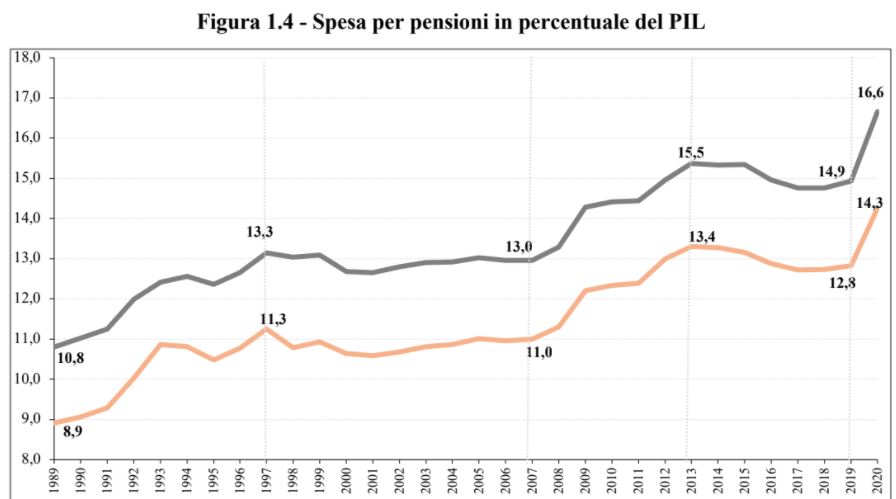But there is a second factor that Italians need to consider. In 1995, precisely to prevent the aging population from completely blowing up the pension system's accounts, a pension reform (better known as the Dini Reform, later supplemented in 2011 with the Fornero Reform) was passed that radically changed the method of calculating Inps checks, for workers hired from 1996 onward. Prior to that year, the amount of the pension depended largely on the average of final salaries: for those hired from '96 onward, on the other hand, the amount of the pension depends only on the amount of contributions paid over the course of the career.
The more you pay in, the higher your pension will be.
Unfortunately, however, many young Italians find stable employment very late in life and often face long periods of unemployment, thus making few contributions over the course of their careers.
Those who have a continuous career, without ever being unemployed, may be able to cover with their accrued pension 65-70% of their last salaries, received before going into retirement. Those, on the other hand, who are likely to be out of work for a long time risk a pension of no more than 50 percent of their final salary.
Therefore, there is a need to run for cover by creating a spare income, so as not to pull heavily on the belt during old age. How to accomplish this? A good financial adviser who helps clients do proper financial planning usually recommends joining supplementary pension funds or policies.
 Alessandro Rosina, professor of Demography and Social Statistics at the Faculty of Economics, Catholic University of Milan
Alessandro Rosina, professor of Demography and Social Statistics at the Faculty of Economics, Catholic University of Milan




/original/Testo+del+paragrafo+%2827%29.png)
/original/Testo+del+paragrafo+%2825%29.png)
